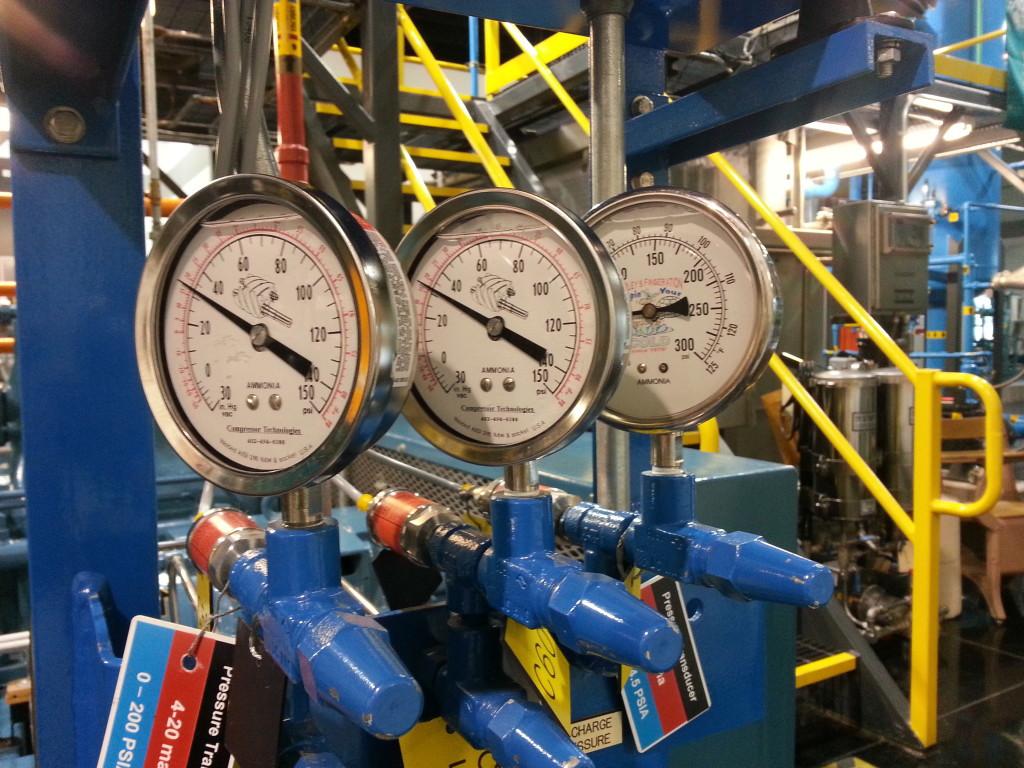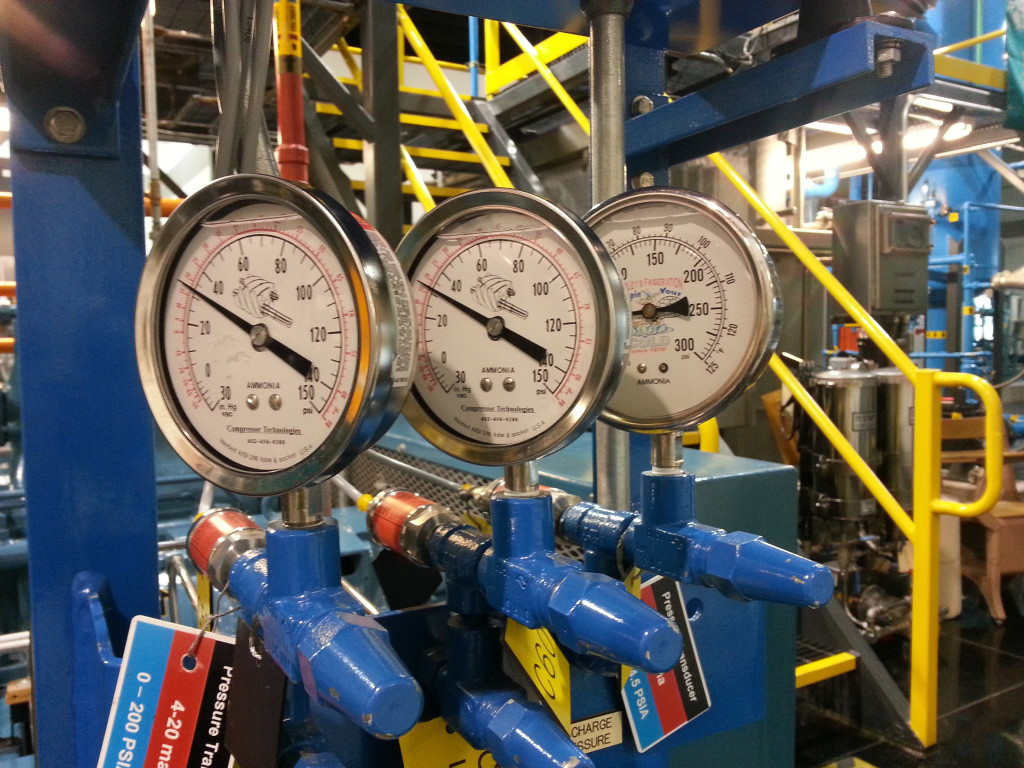Certain instruments used in the refrigeration system are relied on for the information they provide. These include Thermometers, transducers, and gauges. Control computer actions, system operation changes, and maintenance are often based on these values. With this much depending on a number read by the instrument, their accuracy is of great importance. The most troublesome instrument in our industry tends to be the simple pressure gauge. There are some locations in the system where gauges are installed, but nothing is recorded or used in the actual operation of the system. If anything, these gauges are for operator reference only. Should gauges even be used in the system? The answer is really two-fold, and it’s based on both compliance and practicality.
Gauges, pressure transducers, thermometers – whatever instruments you rely on for process safety have to be regularly calibrated. You are relying on the data these instruments provide and it needs to be accurate. An example: Most facilities outsource their vibration analysis. That’s fine – but you need to qualify those contractors to ensure they are capable of performing the job including requiring calibration certificates from them. If you do vibration analysis in house you need to document the training of your technicians and ensure calibration based on the manufacturer’s recommendations. If the vibration equipment isn’t calibrated, all the tests performed could even be considered void during an inspection. Part of a Serious Level Citation in our database found that in this particular company, they were missing a few items:
$7,000 (SERIOUS) Process Safety Information missing:
- No information on pipe specifications or minimum acceptable thickness.
- No U1A reports for five vessels.
- No vibration analysis
- No information on thermometers and gauges
This citation shows us that OSHA is serious about the accuracy of instrumentation. There are a few ways of addressing this issue, but regardless of what your facility chooses, you must have a plan to deal with these gauges. The PHA is one place to address this, and the resulting safeguards or actions from the PHA should drive your plan towards compliance. This plan is your comprehensive answer to controlling the use and accuracy of gauges in your facility.
If the gauge on a line is reading 27psig, but the pressure in the pipe is really 30psig, the operator still has a rough idea that the system is running within limits. The problem occurs when the line needs to be serviced. What if the operator opens that same line with a gauge reading 0psig, when the pressure is really 3psig? Especially on a large line, the scenario could lead to serious injury of the operator. This is why the only place we’re really worried about the accuracy of a gauge is when preparing for a line opening. The establishment and implementation of something fairly simple in your Quality Assurance SOP can help address this situation. Here’s the relevant text from GCAP’s example template:
“Pressure gauges installed throughout the plant are used for a visual reference and pressure estimate ONLY!
Calibrated NIST-traceable gauges (Fluke 2700G-BG2M or equivalent) are available in the control room when pressure must be known rather than estimated such as in preparation for line opening.”
This information could also be included in your Line/Equipment Opening procedure for an additional reminder. Operators will need to be trained on how to identify a faulty gauge, and if there is a plan to replace it. It’s also a good idea to address how your company deals with old or bad gauges, to make sure they aren’t accidentally reused in the system.
The biggest problem in the industry is not that your facility has a plan the inspector doesn’t like; it’s not having a plan at all. By covering the basis of this argument, not only does your facility have an answer to the question, but it goes a long way in establishing consistent operations across all aspects of your refrigeration system.


